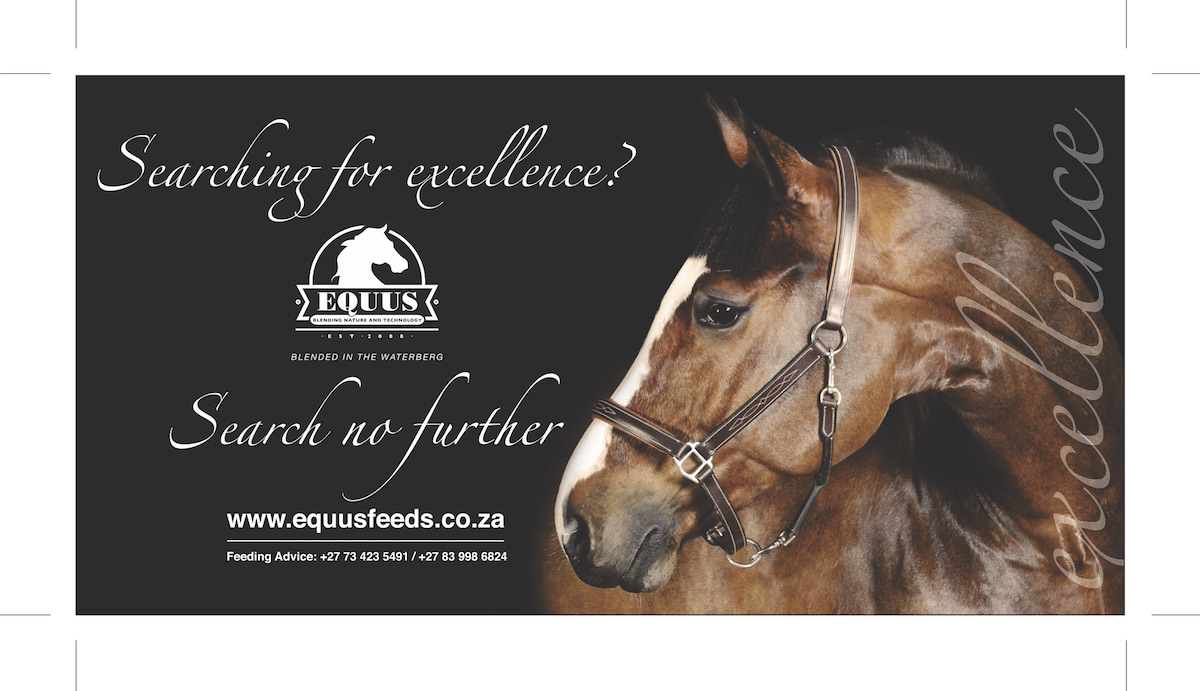EVALUATING AND CHOOSING YOUR HAY -Hannah Botha (MSC Equine Science, Royal Agricultural College, UK)
When choosing the type of hay to purchase, it is always wise, not only to choose the type your horse prefers, but also one that matches his nutritional needs.
The most economical feeding programs maximize forage intake and then add concentrate feeds to meet any unfulfilled requirements. High grain intakes have been implicated as a risk factor in equine colic, which is a good reason to feed as much hay as possible. Diets with low levels of hay have also been related to an increased incidence of stall vices such as cribbing and wood chewing.
All horses should have a minimum of 1.5% of body weight per day in roughage. As a rough guide a horse needing a restricted diet because of being either overweight or simply a good doer could be reduced to an absolute minimum of 1% per day.
Points to consider- Leaf to Stem Ratio
The leaves have a higher level of digestible nutrients than the stems and thus a larger leaf content is desirable. If the hay has a higher proportion of rough, thick stems and a very low leaf content, it generally points towards a less nutritious batch.
Harvesting
The biggest variable affecting nutrient content is the stage of maturity at harvest (cut). Very early cut hay often has a soft texture, is very leafy, and has a high nutrient density and palatability. Mid maturity hays are the most suitable for the average horse as they contain a good combination of leaf and stems while still being palatable. Mature cut hays tend to have a low nutrient value and palatability, meaning fussy eaters may not take well to this cut. However, this type of hay can be a more desirable for horses needing a low calorie diet
Types of Hay
Lucerne
Lucerne generally has a higher nutritional value than most hays and is thus more suitable for horses with higher needs such as those in hard work, mares in foal or those who are lactating. Lucerne typically has a good ratio of stems to leaves, and provides a good level of calcium, quality fibre as well as other valuable nutrients. Mid cut Lucerne hay has a lower content of NSC and sugar making it suitable for those from conditions such as Laminitics, Insulin Resistance and Cushings.
Lucerne can be high in energy and protein which can be advantageous however it could cause excesses if the energy and protein amounts are not adjusted in the concentrate food of the average horse. Ideally no more than 50% of the daily roughage portion should be Lucerne.
It has been shown in many research studies that Lucerne, can assist in reducing the stomach ph of horses which may be desirable in gastric ulcer situations.
Oat Hay
Cereal grain hays, such as oaten, barley, or rye hay are all high in NSCs during their growth phase. When cut at the optimum pre bloom stage (before flowering) for hay, they can contain in excess of 30% NSC and sugars. This makes cereal hays less ideal for sensitive horses. Once they seed (mature cute) however, the sugars are transferred to the seed head to form starch in the grain, leaving the stems with less sugar content. Good quality oaten hay is likely to be the most dangerous for sensitive horses as it is often cut and cured before or at milk seed stage.
Teff and Eragrostis curvula
Teff and Eragrostis are the two most widely used varieties in SA. They are palatable and provide a good amount of fibre without providing too high an energy value. This makes them suitable for the majority of horses. The major disadvantage of these hays is that the nutritional value can range hugely from good to extremely poor quality. Always select these types of hay carefully, looking for optimum harvesting stage, colour and leaf to stem ratio. Studies have shown Teff hay can have a low NSC averaging around 10% or less. This makes it a suitable grass for those with issues such as laminitis, Cushings and Insulin resistance.
Selecting Hay
Local availability often influences the popularity of a particular variety of hay in a geographical area. If you can’t guarantee a regular supply of particular hay in your area then rather choose one you know will be readily available.
Most important of all, however, is that the hay is clean and free of weeds and field contaminations (such as tin cans, twine etc). Hay that is mouldy or dusty should not be fed to horses. Any hay that contains dust or mould can inflame the respiratory tract and impair breathing ability. Hay should be green in colour, with a pleasant aroma. A very sickly smell can indicate overheating, a “straw” like colour can indicate excessive sun exposure and Brown hay can indicate rain damage.
Ideally before buying hay, a sample should be tested in order to get idea of the nutritional value, to assist your nutritionist in assessing the horse’s total diet.

